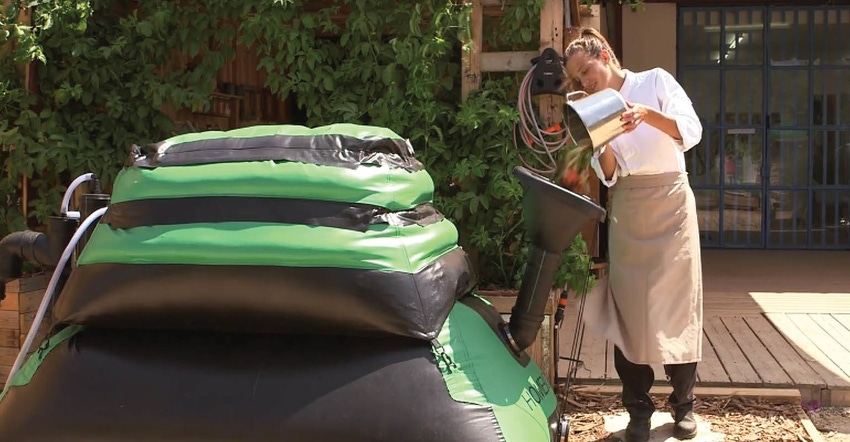The company launched its first biodigester two years ago.

HomeBiogas, an Israel-based clean energy solutions provider, has launched its second biodigester on Kickstarter, HomeBiogas 2.0, which transforms leftover kitchen waste into reusable, clean gas at twice the speed of its original biodigester. Each system produces up to three hours of cooking gas per day with a ready-to-use stovetop.
“Composting is certainly a good step in the right direction, but with HomeBiogas, you can get more out of your waste. HomeBiogas will take care of all your kitchen waste, and turn it into cooking gas and liquid fertilizer daily,” says Oshik Efrati, CEO and co-founder of HomeBiogas. “The liquid fertilizer may be safely used to nourish a vegetable patch, flower beds, fruit trees or a hydroponic bed. The product can also serve as a water and nitrogen additive for a compost heap, and will surely expedite the composting process.”
The company launched its first biodigester two years ago. It was a self-assembled biogas system that turned kitchen waste and livestock manure into usable cooking gas and liquid fertilizer. The system produced clean cooking gas for three meals and 10 liters of clean natural liquid fertilizer a day.
Each new HomeBioGas 2.0 appliance, equipped with a water-resistant outer layer, is fed with equal parts food waste and water. To install, just fill the digester with water, mount the gas container with the sandbags HomeBiogas supplies, and the machine is ready to use.
Inside the appliance, the waste is broken down naturally by bacteria, releasing biogas. The gas tank gradually inflates with ready-to-use gas. Through a patented mechanical pressure mechanism, the gas is delivered at a uniform rate from system to the stovetop, says Efrati.
The system begins working when organic kitchen waste or animal waste is fed into the system. The bacteria in the digester tank break-down the matter through anaerobic digestion. Biogas is created during the fermentation process and is funneled to the kitchen stove via a provided pipe.
“HomeBiogas 2.0 is 50 percent more productive than the previous model. It has a higher gas supply and can support up to four burners at the same time,” says Efrati.
Odors are eliminated because the appliance is designed with an inlet cover, making it completely sealed off from the elements.
“This means that any odors are contained inside the system and unlike with composting, no pests are attracted,” says Efrati. “Lastly, there is a filter installed in the system to eliminate any unpleasant odors, such as H2S, so that the product piped into your kitchen is clean, safe, and smell free.”
Most biodigesters on the market today are often large and bulky, limited to certain areas, or specifically for commercial use, according to the company.
“We are a socially conscious company at our core,” says Efrati. “Our initial campaign gave eco-conscious, western consumers the opportunity to reduce their greenhouse gas emissions and start using renewable energy at home. We believe that with our new campaign and the lowered price point, HomeBiogas 2.0 will have an even bigger impact on communities across the globe, whether it’s used in the U.S., the Philippines or Senegal.”
About the Author(s)
You May Also Like


